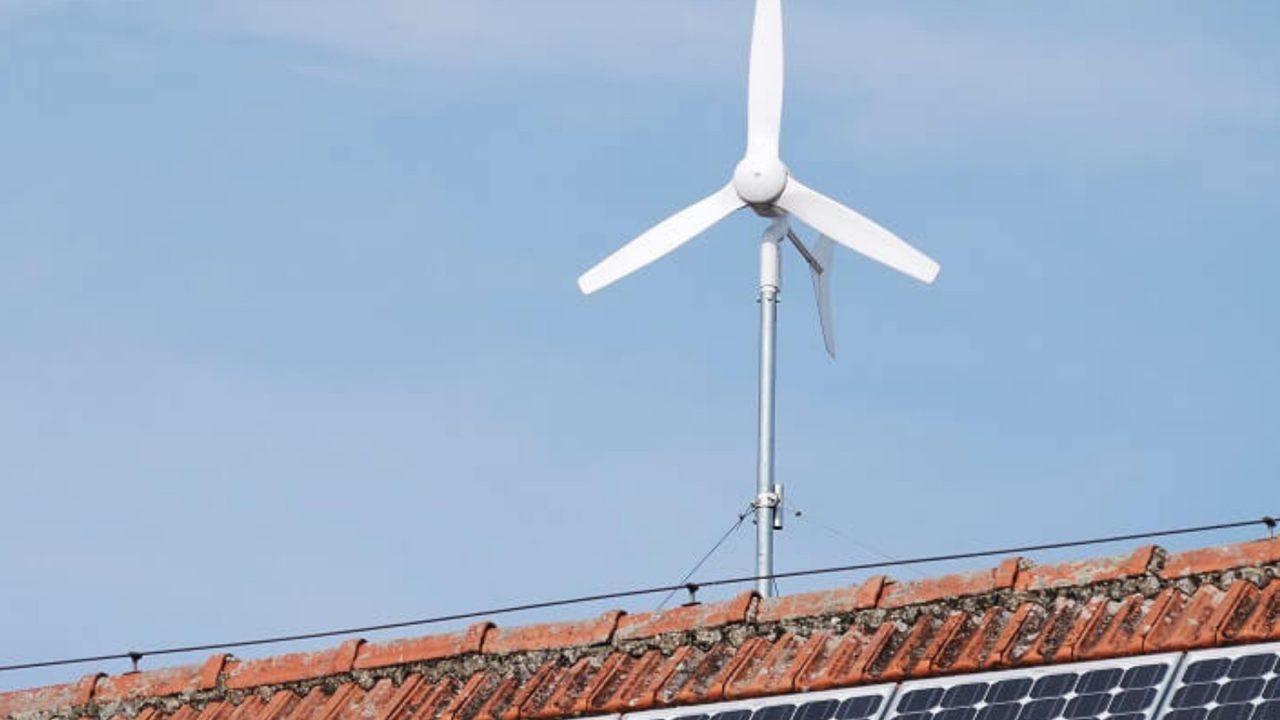India has big goals for renewable energy, and in order to meet these goals, rooftop wind energy can complement solar energy projects.
India is committed to achieving a series of announcements made globally, such as reaching 500 GW (gigawatt) non-fossil energy capacity by 2030; with 50 per cent of its energy requirements coming from renewable energy.
The government has set a target of installing 40 GW (gigawatts) of rooftop solar by March 2026 and has implemented various policies and incentives to promote the growth of the rooftop solar industry.
As of the beginning of 2023, India has installed around 7.6 GW of rooftop solar capacity. The growth of rooftop solar in India is chiefly driven by increasing electricity prices, declining costs of solar technology, and the availability of financing options for solar projects.
Wind power generation capacity in India has however significantly increased in recent years. As of 31 December 2022, the total installed wind power capacity was 41.93 GW, the fourth largest installed wind power capacity in the world.
While rooftop solar has always been a preferred choice for everyone, however, it’s time that the untapped potential in renewable energy sources such as small wind turbines is encouraged further.
Advantage of Small Wind Turbine
Wind may be divided into two categories based on where its energy is harvested: land wind and offshore wind. The land wind is divided into two categories: “small wind” or “distributed wind” and “utility-scale” wind. The offshore wind mostly includes the higher capacity generation units.
Small wind energy refers to the use of wind energy on a small scale for homes, farms, and business setups, with small wind turbines with capacities of up to 100 KW generating electricity. The wind turbines are not linked to the grid here and the power generated is used directly by the end customer.
There are two major types of rooftop wind power are widely used. First, horizontal axis wind turbine or HAWT, and secondly, vertical axis wind turbine or VAWT, also known as cross-wind axis turbine.
Not only are small wind turbines reliable, low-maintenance alternative energy generators that can be constructed quickly in a small space, but they can also operate at wind speeds as low as two metres per second.
Not long ago, installing and maintaining rooftop wind turbines in India could sometime be costly. Wind turbines used to be noisy too, causing vibrations at time. The movement of larger blades themselves in sunlight used to create alternating shadows and light, which led to a flicker effect.
However, development and innovation have eradicated these problems.
The global wind energy market was worth USD 62 billion in 2019 and is projected to reach USD 127 billion by 2027, with a CAGR of 9.3 per cent. The growth in the overall market is not only making off-grid, rooftop wind generation technologically advanced but also affordable gradually.
Now, rooftop wind turbines in the range of 300 watts to 10 kilowatts with 230 volts output are already available in India.
Recent Developments
Aeromine Technologies, a US-based start-up founded in 2020 through seed-funding, has patented a new bladeless wind energy unit. It is competing with rooftop solar as a local source of clean energy and the design can be integrated with the built environment. The company claims that its scalable, “motionless” wind energy unit can produce 50 per cent more energy than rooftop solar at the same cost. Interestingly, this unit is reported to be taking up only 10 per cent of the space required by a solar unit.
Recently, Archimedes Green Energys (P) Ltd., a Hyderabad based company has come out with India’s first rooftop wind turbine. The company, established 2016 by a technocrat entrepreneur, is said to be inspired by the “Make in India” initiative of the Indian Government and recipient of MSME National Award from the Ministry of Micro, Small and Medium Enterprises, Govt of India in the past.
Revayu Energy is another new-comer that offers rooftop hybrid system for generating renewal energy. In the last couple of years, many other start-ups have successfully come up with a wide range of rooftop solutions, especially to produce rooftop wind energy.
While presenting the union budget on 1 February 2023, India’s finance minister Smt. Nirmala Sitharaman declared that battery energy storage systems (BESS) projects will be offered viability gap funding (VGF) for a total capacity of 4,000 MWh. The budgetary outlay will be around Rs. 3,500 cores (USD 430 million).
More opportunities
Ample opportunities in research and business innovation is there to continue exploring the viability of small-scale wind turbines, examining different designs, location techniques etc.
Start-ups in India have gone innovative and started offering wind-solar hybrid system. These are available even on all major e-commerce sites. With a generation capacity of 1 KW, systems are claimed to have up to 20 years of service life.
Further advancements in onsite wind-energy unit are likely to overcome the constraints created by spinning wind turbines and relatively less efficient solar units. Modern wind turbines can operate round the clock, with minimum wind speed.
Analyses find that lithium-ion battery pack prices, which used to be around USD 186 per Kwh in 2018, have decreased sharply to USD 132 per Kwh in 2021 on an average. The battery pack costs are expected to decline further at a compound annual growth rate of 9 per cent until 2026, when it is expected to dip below USD 100 per kWh.
The above will lead to a reduction in co-located storage costs at a CAGR of 6 per cent until 2026. Hence, the expected fall in battery prices by 2026 would make Wind Solar Hybrid, combined with storage, a viable proposition in comparison with conventional generation sources.
Advantage India
India holds an advantageous and strategically important position towards becoming a leading manufacturer of key components required for wind energy-based power generation.
India already enjoys a highly developed industrial infrastructure to manufacture towers, blades, wind rotors and electronic controllers which are essential for the segment. In addition, engineers and technicians are also available for producing, installing and maintaining all forms of wind turbines.
The recent lingering pandemic, subsequent supply chain-related disruptions globally and a few other constraints have made major economies in the world making India an ideal destination for both R & D and manufacturing for renewal energy, including off-grid wind generation systems. The C+1 (China plus One) strategy of risk diversification, adopted by the USA and Japan for sometime now, is finding more takers.
Supply-chain analysts have already predicted that India and Vietnam are the ideal and biggest destination, thanks to the afore-mentioned trends in the international business ecosystem.
The Bottomline
The silent rooftop wind turbines are capable of generating half of an Indian household’s energy needs in a renewable, clean and green manner.
It is estimated that 10 GW power can be generated only through small wind turbines of up to 10 KW capacity in India. There are good prospects to establish up to 1 million small wind turbines between 500 W to 10 KW capacity, catering to households, farms and small enterprises alone.


